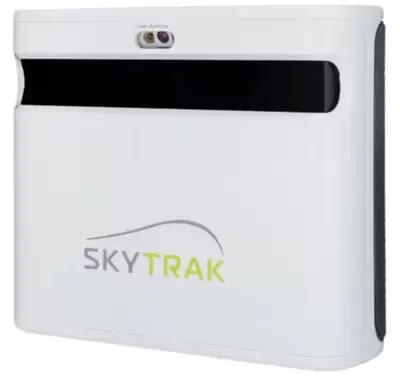Camera vs Radar Based Launch Monitors
Launch monitors have revolutionized the way golfers analyze their game and improve their performance. These advanced devices provide valuable insights into various aspects of a golfer's swing and ball flight. When it comes to choosing the right launch monitor for your needs, you'll often come across two main types: doppler radar and camera-based. In this article, we'll explore the differences between these two technologies and help you make an informed decision.
Understanding Doppler Radar Launch Monitors
Doppler radar technology is widely used in various industries, including military surveillance, weather forecasting, and sports analysis. In the context of golf, doppler radar launch monitors emit radio or radar signals that bounce off the moving golf ball. These monitors then measure the change in wave frequencies to calculate essential data points such as ball speed, launch angle, direction, and spin.
Radar-based launch monitors, such as Trackman and Flightscope, are known for their accuracy and reliability. They offer higher sampling rates, which means they capture more data points during the ball's flight, resulting in greater accuracy in calculating launch angle, spin rate, and other parameters. Radar systems are also less sensitive to environmental factors like lighting and shadows, ensuring consistent performance regardless of the conditions. Additionally, radar systems directly measure the velocity of the golf ball using the Doppler effect, providing precise and real-time data. Exploring Camera-Based Launch Monitors
Camera-based launch monitors, also known as photometric systems, rely on high-speed cameras to capture hundreds of images per second of the golf ball. These images are then processed using computer vision algorithms to extract data points related to ball speed, launch angle, spin rate, and more. Camera-based systems excel in providing detailed club and impact data, allowing golfers to analyze their swing mechanics with great precision.
One of the advantages of camera-based launch monitors is their ability to interact with virtual course elements. These systems can detect how the ball interacts with grass, sand, or water hazards in a virtual golf simulation, providing realistic ball reactions and roll on the virtual green or fairway. The detailed data collected by camera-based systems also enhances graphics and animation, creating a more immersive and engaging experience for the user. Accuracy Comparison: Radar vs. Camera-Based
In terms of accuracy, radar-based launch monitors have the edge over camera-based systems. Trackman, considered one of the most accurate launch monitors in golf, relies on doppler radar technology for precise measurements. Radar systems offer higher sampling rates, which means they capture more data points during the ball's flight, resulting in greater accuracy in calculating launch angle, spin rate, and other parameters.
Radar systems are also less affected by environmental factors such as lighting, shadows, and ball visibility. Camera-based systems, on the other hand, may encounter challenges when the lighting conditions change, impacting the camera's ability to accurately track the ball. However, it's worth noting that top-end camera-based launch monitors, such as GCQuad, can provide accuracy comparable to radar systems outdoors. Simulation Experience: Which Technology Shines?
When it comes to the simulation experience, camera-based launch monitors offer several advantages. These systems can capture the movement of the golf club and clubhead during the swing, providing detailed data on clubhead speed, face angle, and swing path. This information can be accurately translated into the virtual simulation, influencing shot behavior and outcome.
Camera-based systems also excel in providing interaction with virtual course elements. Golfers can experience realistic ball reactions and roll on the virtual green or fairway, enhancing the overall simulation experience. The detailed data collected by camera-based systems allows for more realistic graphics and animations, creating a more immersive and engaging virtual golf experience. Outdoor Use: Radar Takes the Lead
When it comes to outdoor use, radar-based launch monitors have the advantage. These systems are designed to track the entire ball flight, making them ideal for measuring data points in a wide variety of conditions. Radar systems are less affected by changes in lighting conditions, ensuring consistent performance outdoors.
Camera-based launch monitors, on the other hand, have a limited view of the ball flight indoors. These systems rely on a clear view of the ball and the area just before and after impact. While they can still be accurate outdoors, radar systems generally perform better in outdoor scenarios where they can track the ball's flight over a longer distance. Cost Considerations: Radar vs. Camera-Based
When it comes to cost, radar-based launch monitors tend to be more expensive. However, it's important to note that the price can vary depending on the specific launch monitor and its features. In some cases, camera-based launch monitors can also be relatively pricey, especially if they offer advanced capabilities and features.
It's essential to consider your specific needs and budget when choosing a launch monitor. Decide which features are most important to you and weigh the cost against the value provided by the launch monitor's capabilities. Ease of Use: Radar Takes the Lead
In terms of ease of use, radar-based launch monitors have the advantage. These systems are generally easier to set up and use, requiring minimal calibration. While it's important to position a radar system correctly behind the ball, there isn't much additional setup required.
Camera-based systems, on the other hand, may have a lengthier calibration process. This process often includes adding unique dots or line markings to the golf balls and placing the launch monitor in the optimal spot next to the ball. However, once properly calibrated, camera-based launch monitors can provide accurate and detailed data. Space Requirements: Radar vs. Camera-Based
Radar-based launch monitors typically require more space compared to camera-based systems. Radar systems often need to be placed 6-8 feet behind the golf ball, which can be a constraint in indoor setups. This distance requirement can limit the use of radar-based launch monitors in smaller spaces.
Camera-based systems, on the other hand, have more flexibility in terms of space requirements. These systems only need a view of the ball and the area just before and after impact, making them suitable for smaller indoor setups. Camera-based launch monitors can be positioned directly next to the golf ball, saving space and allowing for more versatile placement options. Examples of Radar and Camera-Based Launch Monitors
There are several radar-based and camera-based launch monitors available on the market. Here are some examples of each:
Radar Golf Simulator Examples
Photometric Golf Simulator Examples
These examples represent a range of options, from premium launch monitors used by professionals to more affordable options suitable for home golf simulator setups. Each launch monitor offers unique features and capabilities, so it's important to research and choose one that aligns with your specific needs and budget.
Making the Right Choice for Your Golf Simulator Setup
When choosing between radar and camera-based launch monitors, consider your specific needs and requirements. If you frequently play outdoors or have a larger space available, a radar-based system like Trackman or Flightscope may be the best option. Radar systems offer high accuracy and performance in measuring ball flight data over longer distances.
If you have a smaller indoor setup or prioritize detailed club and impact data, a camera-based system like SkyTrak or Foresight GCQuad may be more suitable. Camera-based launch monitors excel in providing a complete view of ball flight in limited spaces and offer a more immersive simulation experience. Ultimately, the choice between radar and camera-based launch monitors depends on your individual preferences and goals. Consider factors such as accuracy, simulation experience, outdoor use, cost, ease of use, and space requirements to make an informed decision and enhance your golf simulator setup. In conclusion, launch monitors have revolutionized the way golfers analyze their game and improve their performance. Whether you choose a radar-based or camera-based system, these advanced devices provide valuable insights into various aspects of your swing and ball flight. Consider your specific needs and goals to make the right choice for your golf simulator setup. Happy golfing! *Note: The information provided in this article is based on research and reference articles. It is important to thoroughly research and compare different launch monitors before making a final decision.
0 Comments
Your comment will be posted after it is approved.
Leave a Reply. |
|




 RSS Feed
RSS Feed


